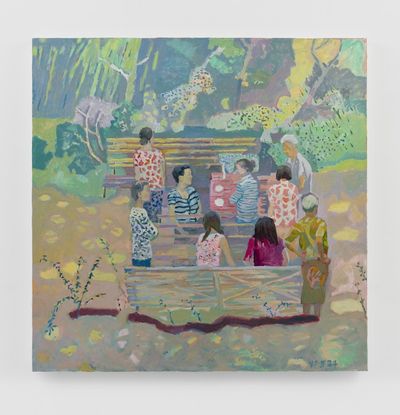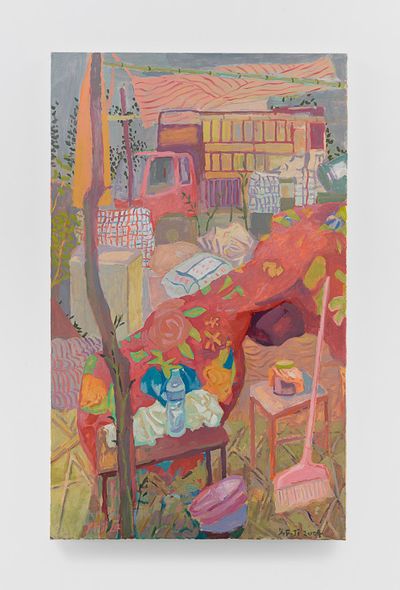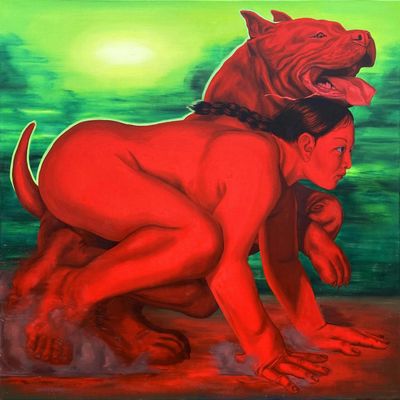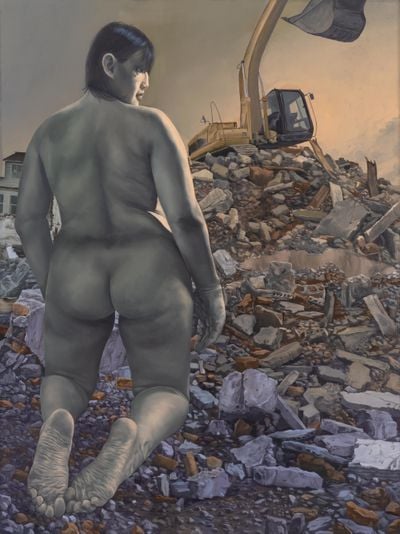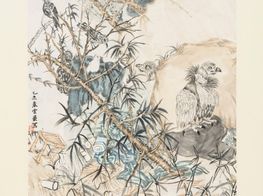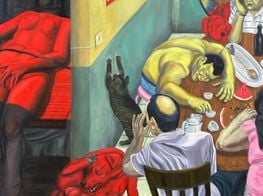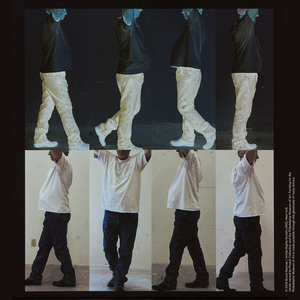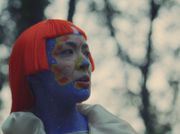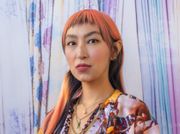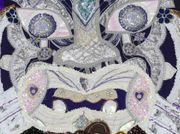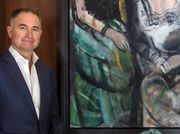From One Place to Another: Amanda Ba and Yun-Fei Ji Negotiate Chinese Identity
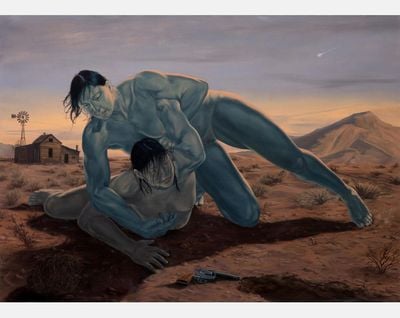
Amanda Ba, American Western (2022). Oil on canvas. 213.4 cm x 152.4 cm. Courtesy the artist.
While the market for Chinese contemporary art has cooled somewhat and the fanfare has subsided, there is a resurgence of Chinese artists exhibiting in New York this year. Some are already well known, but many others are new graduates, gaining recognition in galleries, large and small.
This broad range of practitioners offers an interesting opportunity to consider what the term 'Chinese artist' even means in this present-day, diasporic context. Currently in the process of interviewing many artists new to the scene, I am finding that each has their own idiosyncratic definition of identity, invariably defying stereotypes and cultural ties.
Two artists who demonstrate the sharp contrast between established Asian practitioners, who have lived in New York since the 1990s, and their emerging young counterparts are Yun-Fei Ji, born in Beijing in 1963, and Amanda Ba, born in Ohio in 1998, but raised by her grandparents in Hefei, China.
Now showing at James Cohan Gallery with the aptly named exhibition From One Place to Another (10 May–15 June 2024), Ji captures the nostalgia for a homeland and the commonplace encounters of an immigrant.
Ba, whose show opens at Jeffrey Deitch in September, paints female superheroes embodying the fierce confidence and unapologetic ambition of those who refuse a marginalised position. Both artists expand our notions of contemporary art, but one still seems constrained by scenes of Chinese heritage, while the other has found a vocabulary that bursts out of categorisation.
Ji is best known for his ink-and-brush paintings, which ironically deploy this classical technique to depict the tragic consequences of urbanisation and mass migration endemic to mainland China. Recently, he made a major shift in his practice, switching to acrylics and now oil to explore the materiality of a globalised world. Ji returned to China from 2009 to 2015, but has not visited since the pandemic lockdowns; unreliable memories are the foundation of these seemingly straightforward scenes.
The Dancing Aunties of Sunset Park (2024), a high point in the exhibition, is heightened by the artist's sophisticated use of colliding perspectives and contrasting patterns to depict a group of women gathered to enjoy themselves. However, this event is not taking place in China, but in Brooklyn; it's a re-creation of a Chinese leisure activity that has found new followers in the diaspora. Likewise, in Red Bedding, Red Truck (2024), the sheer complexity of the composition references both a suburban moving day and the ramshackle tents of a migrant camp.
With a soft-spoken palette, Ji combines the multiple entry points of classical scroll paintings with the concern for the common man found in Cultural Revolution propaganda. This artist, who entered one of the first classes at the Central Academy of Fine Arts in Beijing after the Cultural Revolution yet rebelled by developing an interest in ink-and-brush painting, is adept at both legacies.
He explains his recent conversion to oil as a continuation of the constant exploration fundamental to being a great artist. Pointing to Pablo Picasso and Henri Matisse, he notes that both masters embraced various media—from painting and collage to sculpture, drawing and ceramic—which only enhanced their stature. 'Why can't I be allowed the same freedom?' he asks.
The only things restraining him, however, are retrograde expectations of cultural allegiance that are either self-imposed or from Western observers. By reinventing his painting practice, Ji raises challenging questions about what makes an artwork 'Chinese', defying the discrimination imposed on many Asian-American artists in previous decades.
In contrast, Ba, who graduated from Columbia in 2020, exhibits few constraints in her highly graphic paintings of exhibitionism. The women—all of whom look like Ba—are powerful, kickass antidotes to the persistent stereotypes of submissive and compliant Asian women, found equally in classical scroll paintings and popular culture.
It is tempting to read her best-known works—portraits of mammoth female figures posing with a dangerously powerful pit bull—as metaphors for her struggles with such persistent and insidious expectations. But that would be a little too literal and limiting.
Her upcoming show at Jeffrey Deitch was informed by her recent trip to China and her impressions of a country that requires only a little imagination to be seen as surrealistic. The new works will go public soon and strongly relate to previous paintings. For example, Running On All Fours to The Future (2021) reveals an intimate scene between a woman and her pet dog, both looking equally fierce. In Rubble (2023), a nude female giant poses proudly in a debris-filled lot. Ba points to Lisa Yuskavage and Kerry James Marshall as key influences, but also the bloody dogs in early paintings by Zeng Fanzhi and the multiplication of self-portraits by Yue Minjun.
Referring to herself as a 'person of colour', rather than 'Asian American', Ba argues that it is important to tap into the interconnection of broad histories of persecution in the United States. 'The art-historical canon is filled with white people, and that is a given,' says Ba. 'It is an obvious first move, this subconscious responsibility to insert some figures who look like myself.'
Ba admits that she has a secret desire to be as free of self-doubt as Martin Kippenberger, but her work still presents as the output of someone unabashedly unashamed of her body, her opinions and her cultural roots. These are works that are free of shame and, as such, liberate us to engage head-on without guilt over cultural complications.
Both artists are powerful painters, using their medium to convey stories that resonate with a wide range of viewers. In the past, both would have been yoked together as Chinese contemporary artists. Today, there is the distinct possibility that art connoisseurs will simply appreciate their talents without even considering that label.—[O]

